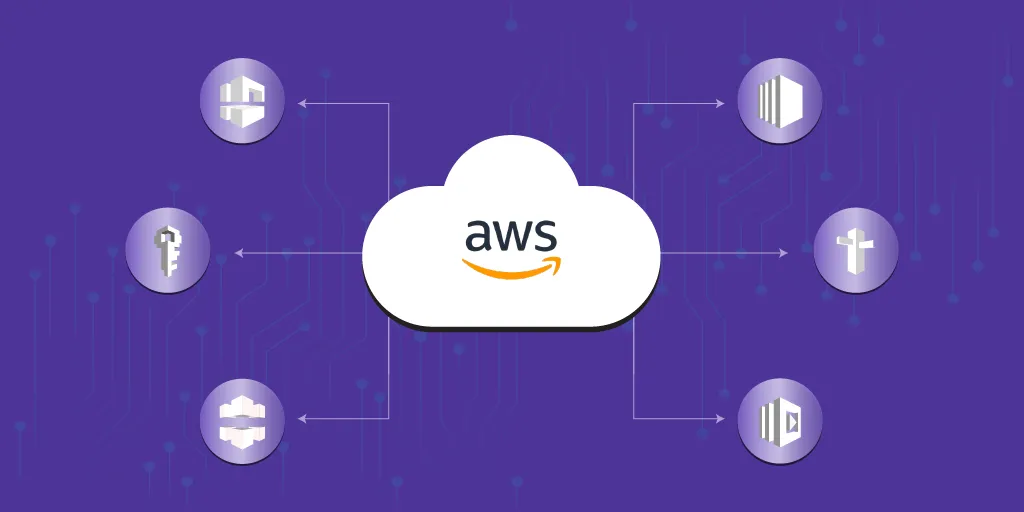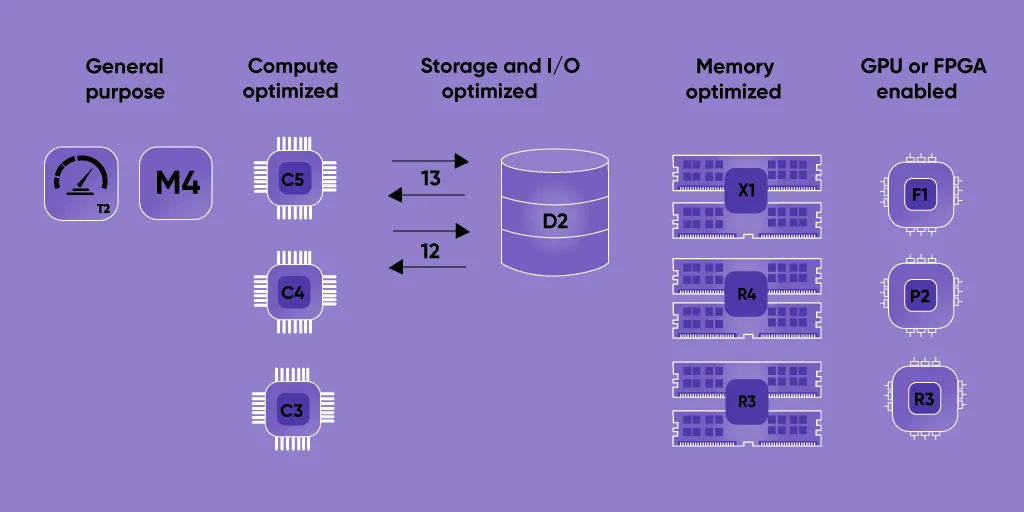Technology

8 min

Explore the most exciting and cutting-edge AWS tools of 2025. In this fast-paced era of cloud computing, Amazon Web Services (AWS) continues to lead the market with its innovative solutions. With a focus on enhancing customer experience and expanding its cloud portfolio, AWS has launched an array of remarkable tools that are revolutionizing the industry.

By Vinamra Singh
23 May, 2023
Amazon Web Services (AWS) has launched new tools for better customer experience and a portfolio around AWS's ever-growing cloud. The organization reported an operating income of $6.5 billion for its initial quarter, up from $4.2 billion a year prior. From new automation and configuring tools to new EC2 instances, the Seattle-based public cloud market-share leader is creating new cloud offerings in 2025 at a fast rate. AWS's red-hot innovation engine is continuously driving sales for the organization this year.
AWS also keeps working out its customer base and service contributions by framing new essential associations with industry titans. Likewise, the distributed computing hotshot was authoritatively granted for the current year with the U.S. Public Safety Organization cloud contract worth up to $10 billion, outperforming its kindred cloud opponents for the deal.

This service makes it quicker and more straightforward for developers to create digital twins of natural systems such as buildings, factories, industrial equipment, and production lines. The digital twins are virtual portrayals of scenarios that use real-world data to mimic the structure and state of the objects they address.
AWS IoT TwinMaker aims to make it easy for developers to incorporate data from multiple sources. It combines that data to create an information diagram that models the real-world environment.
IoT TwinMaker customers can utilize digital twins to build apps that improve operational efficiency and reduce downtime. There are no up-front charges to use AWS IoT TwinMaker, and users only have to pay for accessing data.
The new Container Rapid Adoption Assistance Program comes after AWS' successful 2020 rapid adoption program for artificial intelligence and machine learning and AWS's 2021 Internet of Things (IoT) quick adoption program.
AWS' latest Container Rapid Adoption Assistance Program offers tech expertise and hands-on guidance to partners to speed up container solution deployments on behalf of public sector customers. Usually, partners were always asking for more technical assistance. So it provides them with technical engagement on containers.
But for better results, we need more partners to understand how their customers design container apps. Containerization boosts application quality, portability, agility, security, fault isolation, and efficiency.

AWS' new Amazon Aurora Serverless v2 naturally scales to countless exchanges in a small portion of one moment to help the most requested applications. Amazon's Aurora Serverless v2 scales limit increases in light of an application's requirements, giving clients/users up to 95 percent cost reserve funds contrasted and provisioning database limit capacity for peak load.
The contribution additionally gives the full expansiveness of Amazon Aurora's capabilities, including utilizing numerous AWS accessibility zones for high accessibility, worldwide data set for local reads with low inactivity, read replicas for superior execution, and parallel queries for quicker questioning. "Amazon Aurora is the primary social database worked from the beginning for the cloud," said Swami Sivasubramanian, VP of databases and machine learning at AWS. "
The next generation of Amazon Aurora Serverless is currently considerably simpler for users to abandon the requirements of privileged databases and enjoy the massive expense reserve funds of the versatile, on-request limit with every one of the high-level capabilities in Amazon Aurora." There are no direct commitments or extra expenses to utilize Amazon Aurora Serverless v2, and users compensate for the database limit. For the most part, Amazon Aurora Serverless v2 is accessible today for MySQL and PostgreSQL-compatible versions of Amazon Aurora.
Amazon sent off a three-dimensional web-based role-playing game where players travel through a virtual city, assisting individuals with tackling genuine innovation issues and cloud use cases, determined to construct AWS cloud abilities, and planning for the AWS Certified Cloud Expert Test.
It was designed by AWS this year to assist individuals with becoming AWS cloud specialists by solving cloud business use cases in the game as Amazon keeps on investing hundreds of millions in providing free cloud computing training. AWS Cloud Quest and AWS Educate intentionally move away from passive content to make abstract cloud computing concepts real through interactive and hands-on activities that immediately let learners turn theory into practice.
To win "AWS Cloud Quest", players must finish quests to assist the virtual citizens in building a superior city, which will fabricate an individual's genuine distributed computing abilities. Players learn and fabricate cloud solutions by exploring core AWS services and categories, such as storage capacity, database, and security administrations. Such gameplay includes quizzes, videos, and active exercises based on real-world business scenarios.
In May 2022, AWS launched the general availability of its Amazon Elastic Compute Cloud (EC2) C7g instances powered by AWS-designed Graviton3 processors. For better performance, AWS' new C7g instances use AWS Graviton3 processors to provide up to 20-25% compute-intensive apps than current generation C6g instances powered by AWS Graviton2 processors.
The higher & better performance of C7g cases makes it feasible for customers to run various compute-intensive workloads. Workloads like web servers, load balancers, and batch processing to Electronic Design Automation (EDA), superior computing, gaming, video encoding, machine learning inference, and ad serving are feasible for customers.
Note: There are no minimum commitments or up-front expenses to utilize C7g instances, and customers pay only for the amount of computing used.
AWS Mainframe Modernization is another new service launched in June. It's primarily aimed at making it faster and easier for customers to modernize workloads by moving them to the AWS cloud. AWS Centralized Server Modernization is another help toward making it quicker and more straightforward for clients to update centralized computer-based jobs by forcing them to the AWS cloud.
With AWS Mainframe Modernization, user can refactor their mainframe workloads to run on AWS by transforming mainframe-based apps into modern cloud services. Users can keep their apps as written and re-platform their workloads to AWS by reusing existing code with insignificant changes. AWS said a managed runtime climate incorporated into AWS Mainframe Modernization provides the essential register, memory, and storage capacity to run both refactored and re-platformed apps.
The AWS Mainframe Modernization service likewise provides the development, testing, and deployment tools necessary to automate the modernization of mainframe apps to run on AWS. There are no up-front costs, and customers only pay for the amount of computing provisioned.
AWS' new tool, i.e., Spark for Public Sector Partners Program, launched in June 2022. It provides various training and resources for partners to build on top of AWS solutions to solve common customer problems in the public sector. The channel can access new and developing solutions through this program, promotion on AWS solution pages, and go-to-market support such as joint planning, MDF, and sales support.
"Partners can use these assets to speed up proofs of concept and customer deployment because customers' perspectives have changed because of COVID. Jeff Kratz, GM of AWS', said that. "We're seeing governments that act like startups in so many different ways, and they want things now. They want to move with speed."
The program expects to help the channel build solutions that address public sector mission needs by allowing partners to make on top of the AWS open-source software to kick off their solution contributions.

The public cloud monster sent off AWS Amplify Studio, another visual improvement climate for making web application UIs that expand AWS Enhance so engineers can make completely adaptable AWS web applications with negligible coding. Customers leverage AWS Amplify to configure and deploy AWS services more efficiently, including its database and storage services, to power their apps.
AWS Amplify Studio enhanced the capabilities of AWS Amplify for building a unified visual development environment for building rich web applications on AWS that influence the application to make dynamic UIs. Developers can use AWS Amplify Studio to build a UI using a library of prebuilt parts, collaborate with user experience designers, and connect their UI to AWS services through a visual interface without any code.
AWS said Amplify Studio then converts the UI into JavaScript or TypeScript code, which saves developers from writing thousands of lines of code. It also allows them to customize their web application design using familiar programming languages.

AWS launched the general availability of Amazon Elastic Compute Cloud (Amazon EC2) Hpc6a instances. It is a new instance type built for tightly coupled High-Performance Computing (HPC) workloads. The HPC mainly aim to make it more cost-efficient for customers to scale HPC clusters on AWS to run their most compute-intensive workloads such as genomics, weather forecasting, molecular dynamics, financial risk modeling, computer-aided engineering, and seismic imaging.
The new Hpc6a instances are built to offer the best performance for running HPC workloads at scale in the cloud. The cases are powered by third-gen AMD EPYC processors, mainly aimed at expanding AWS' portfolio of HPC options. AWS said Hpc6a instances convey up to 70 percent better performance for HPC workloads to carry out complex estimation across a scope of cluster sizes.
Hpc6a instances are enabled with an Elastic Fabric Adapter (EFA). By default, EPA is a network interface for Amazon EC2 instances. With EFA networking, customers benefit from low latency, low jitter, and up to 100 Gbps of EFA networking bandwidth to increase functional efficiency and drive faster time-to-results.

Amazon EMR Serverless is another serverless deployment choice in Amazon EMR, launched in June. It makes it simple and cost-effective for data specialists to run petabyte-scale information examinations in the cloud.
Amazon EMR is the primary information offering users can use to run large-scale circulated information handling positions, intuitive SQL inquiries, and AI applications based on open-source investigation frameworks, such as Apache Flex, Apache Hive, etc. With AWS EMR Serverless, organizations can run their spark applications without arranging, upgrading, tuning, or managing clusters.
EMR Serverless offers automatic scaling; this provisions and scales the compute and memory resources required by the apps. EMR Serverless coordinates with EMR Studio to furnish users with specific tooling to check the situation with running position, survey work history, and utilize recognizable open-source tools for debugging.
That's it!!! You are now aware of the coolest AWS tools in 2025. We hope to see further enhancements in AWS tools, and Quokka Labs will keep you informed of any updates as these progressions carry out.
Any queries, suggestions, or comments? Drop them in the comment section.
Thanks!!!
Top 11 Must-Have Features of a Custom Web Application in 2026
By Dhruv Joshi
5 min read
Generative AI Tech Stacks: Choosing the Right Tools for Scalable AI Development
By Dhruv Joshi
5 min read
Choosing Best Tech Stack for Web App Development: Performance, Cost, and Scalability
By Dhruv Joshi
5 min read
Top 9 Tech Stacks for Scalable Web Application Development
By Dhruv Joshi
5 min read

Technology

7 min
Generative AI is moving fast into enterprises, from banks to hospitals to government agencies. Adoption is rapid, but security planning lags. Unlike traditional systems, these models can be exploited through prompt injection, poisoned data, or manipulated to leak sensitive information. They are also misused for phishing, deepfakes, and malicious code.


Technology

7 min
AI-powered Web Application Firewalls (WAFs) go beyond static rules by using machine learning, anomaly detection, and predictive analysis to block zero-day threats, reduce false positives, and protect APIs at scale. Unlike traditional WAFs, they self-learn, adapt in real time, and cut operational costs while improving compliance and trust.


Technology

5 min
AI is redefining mobile app security by transforming how threats are detected, tested, and prevented. From continuous monitoring and fraud detection to compliance with regulations, AI ensures apps remain resilient against modern risks. This means safer apps, protected users, and stronger businesses. Investing in AI-driven security today builds trust, drives growth, and secures long-term competitive advantage.


Feeling lost!! Book a slot and get answers to all your industry-relevant doubts